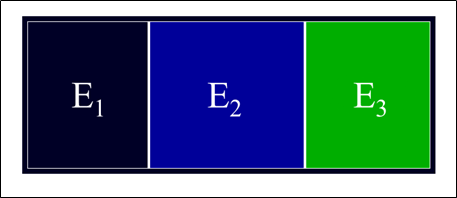Probability: random experiments – exhaustive events
When a sample space is divided into multiple mutually exclusive events where their union forms the sample space itself, then these events are called exhaustive events.A collectively exhaustive event contains all the possible elementary events for a certain experiment under consideration:
In probability theory and logic, a set of events is either jointly or collectively exhaustive if at least one of the events must occur for certain. For example, when rolling an unbiased six-sided die, the outcomes 1, 2, 3, 4, 5, and 6 are collectively exhaustive. We can confirm that because the outcomes cover the entire range of possible outcomes for an experiment. Similarly, when a coin is tossed, the outcome can either be heads or tails. Therefore, since each can occur during the conduct of an experiment, they are both exhaustive events.
Another way to explain collectively exhaustive events is that the union of these events must cover all the events within the entire sample space. For example, events E1, E2 and E3in the figure below are said to be collectively exhaustive if where S is the sample space. The following example shows a sample space with 3 collectively exhaustive events:

Compare exhaustive event to the concept of a set of mutually exclusive events. In this set, no more than one event shall occur at a given time. The set of all possible results from rolling the die is both collectively exhaustive and mutually exclusive. For example, outcomes 1 and 6 are mutually exclusive but not collectively exhaustive. The outcomes “even” and “not-6” are collectively exhaustive but they are not mutually exclusive. In some forms of mutual exclusion, only one event can ever occur whether that event is collectively exhaustive or not. For example, tossing a certain type of biscuit for a group of several dogs cannot be repeated, no matter which dog snaps it up.
Example: Consider the following set, S = {a, b, c, d, e, f, g, h, I, j} with Event X: { a, b, c} , Event Y: {d, e, f}, Event Z: {g, h, i, j}
In this example, Event X, Y and Z are mutually exclusive because of X∩Y∩Z = φ, a null set.
To check whether the events are exhaustive:
X U Y U Z = {a, b, c} U {d, e, f} U {g, h, i, j } = { a, b, c, d, e, f, g, h, I, j} = S
Likewise, events X, Y and Z are mutually exclusive and exhaustive because they forma complete sample space by themselves.